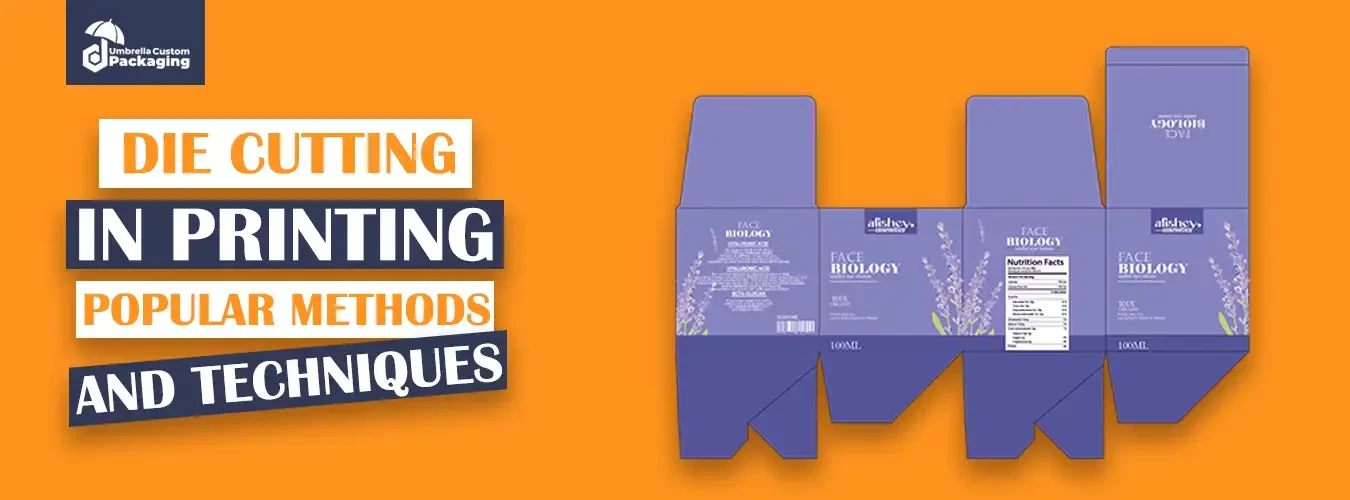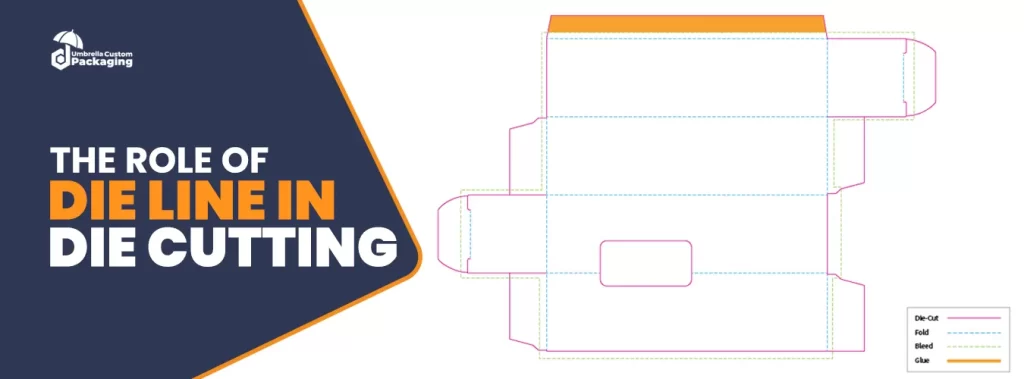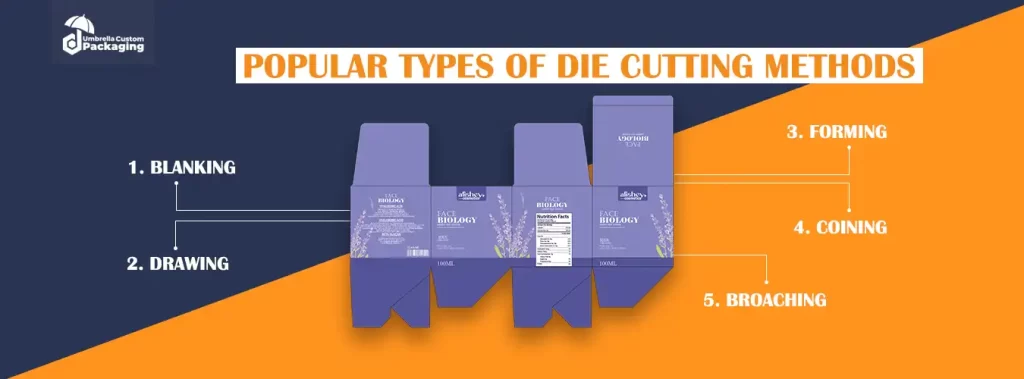Die Cutting in Printing: Popular Methods and Techniques

Die cutting is a technique used in printing to cut paper, cardboard, or other materials into specific shapes. Imagine it like using a special cookie cutter, but instead of cutting dough, it’s cutting paper or other materials.
This method of printing is a way of creating custom shapes from flat materials by using a die and a machine to cut the same shape repeatedly. This process makes products look professional and interesting by adding unique shapes that would not be possible with just a regular printer.
The History of Die Cutting
It was invented in the mid-1800s to help the shoe industry cut leather more efficiently. Before this, holes in the leather were punched by hand, making shoe production slow and labor-intensive. This method also led to many inconsistencies between shoes.
In the 21st century, die cutting machines have become much more advanced and flexible than ever before. As technology improves, these machines can now do far more than the early shoemakers ever dreamed possible.
The Process of Die Cutting
A die is a metal blade shaped exactly like what you want to cut. Dies can be pre-made in common shapes or custom-made if you need something unique.
We place the die inside a machine called a die-cutting machine. This machine pushes the die down onto the material to make a clean cut. The paper, cardboard, or other material you want to cut is placed inside the machine, under the die. The machine pushes the die down onto the material, cutting out the shape. It is like pressing a stamp onto paper, except here, it is cutting out the shape.
The Role of Die Line in Die Cutting
A die line is a special line or outline that shows exactly where a die will cut a material. It acts like a blueprint or a guide for the die-cutting machine. When designers create a die line, they make sure it marks the edges of the shape or design they want to cut out. This line helps to ensure that everything is cut in the right place, so the final product looks neat and precise. With a die line, the cutting process might be accurate, leading to mistakes in the design.
In addition to guiding the cuts, the die line also shows areas where the material might need to be scored (like for folding) or perforated (like for easy tearing). This ensures that the machine can fold, bend, or tear the finished product exactly as needed. Die lines are crucial for packaging, greeting cards, stickers, and many other products, helping to create consistent and professional designs every time.

Popular Types of Die Cutting Methods
There are different types of die-cutting methods, and the right one for your project depends on what you want your product to look like. Here are some popular ones, explained simply:
1. Blanking: Blanking is like taking a flat sheet of paper and cutting out a shape from the edge. This method helps make materials look very flat and even.
2. Drawing: Drawing pulls the material through the machine to a certain length. It’s good for making long, thin items, like strips or tubes.
3. Forming: Forming shapes the material on a curved surface. Manufacturers often use it with drawings to make things like round tubes or other cylinder shapes, which are especially useful for custom packaging.
4. Coining: Manufacturers use coining to press circular holes or designs into the material by using a lot of pressure. This can create very detailed designs, adding a fancy look to the packaging.
5. Broaching: Broaching uses rows of sharp “teeth” to cut through hard materials. It can handle things that regular die cutting cannot cut.
Each method gives different results, so designers pick the one that best matches the shape, style, and details they want for their project!
There are many other types of methods, which are as following:

Flatbed Die Cutting
Flatbed die cutting uses a flat “bed” (surface) and a die that’s pressed down onto the material. The die is made from sharp metal and has the shape you want to cut out. It’s great for thicker materials like cardboard or certain plastics.
It can cut large shapes or very intricate designs with high precision and works well with thicker materials. However, it is slower than other methods, so we often use it for smaller batches.
Rotary Die Cutting
It uses a cylindrical (round) die that rotates, cutting the material as it passes through. The material is fed into the machine, and the rotating die cuts the shapes continuously as it moves.
It’s commonly used for softer, thinner materials like paper or fabric and is great for high-volume production. Very fast, ideal for making a large number of items quickly. Works best with thinner materials and simpler shapes.
Digital Die Cutting (Laser or Plotter)
Instead of using a physical die, digital die cutting uses a laser or a computer-guided blade (plotter) to cut the material. The computer directs the machine exactly where to cut, removing the need for a die.
Ideal for short runs, custom shapes, or materials that lasers can easily burn or cut, like paper, foam, and thin plastic. Allows for detailed, custom shapes without needing to create a die, making it flexible for unique designs. Slower than rotary die cutting and may not be ideal for thicker materials.
Steel Rule Die Cutting
It uses a die made with a thick steel blade shaped into the design. Then, we press the die onto the material to cut out the shape. Works well for materials like leather, foam, rubber, and thicker papers.
Good for cutting large shapes from thicker materials; it’s also a durable option. Dies can be expensive to create, so it’s more common for larger production runs.
Punch Press Die Cutting
Punch press die cutting uses a powerful machine that "punches" out shapes with strong, fast pressure, like a big, mechanical hole puncher. Often used for heavy-duty materials like metal, leather, and thick plastic.
Can handle very tough materials and is great for high-volume production. Machines are often large and loud. Not as precise for delicate or intricate designs.
Each method serves a different purpose and people choose it based on the type of material, shape, quantity, and precision needed. This variety allows for many creative and functional die-cut products across different industries!
Advantages and Uses of Die Cutting
Die cutting makes precise, identical shapes every time, so each piece looks exactly like the others. The machine can cut many shapes quickly, saving time, especially when making large quantities. All shapes come out looking the same, which is great for packaging or brand logos.
We use this method to make products with custom shapes that look polished and professional. We commonly use it for:
It helps create stickers in shapes other than just squares or circles.
Custom-shaped boxes, envelopes, and product packaging often use this method.
Die cutting often creates fancy, shaped edges on greeting cards.
Clothing tags, gift tags, and labels often have unique shapes made with this method.
Unique Packaging Solutions for Your Custom Products
At Umbrella Custom Packaging, we know that creating custom packaging isn’t something everyone is familiar with but we’re here to help! Our team is ready to answer any questions you have about designing, printing, and shaping unique, sturdy packaging for your products.
If you have an idea for your custom packaging but aren’t sure how to make it happen, don’t worry! Our talented designers can bring your vision to life. Whether you want sleek, modern boxes, strong protective packaging, or eco-friendly materials, we’ll help you create packaging that stands out and matches your brand.
Feel free to contact us for a free quote! We will walk you through our packaging and printing methods, show you design options, and help you decide the best approach for your custom packaging. With Umbrella Custom Packaging’s expertise, now is the perfect time to make your product look great with high-quality packaging. Let’s make your packaging ideas a reality!
Table of Contents
Latest Articles
© 2025 Umbrella Packaging All rights reserved.








